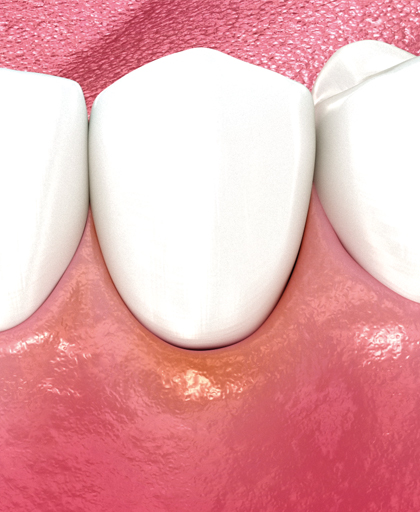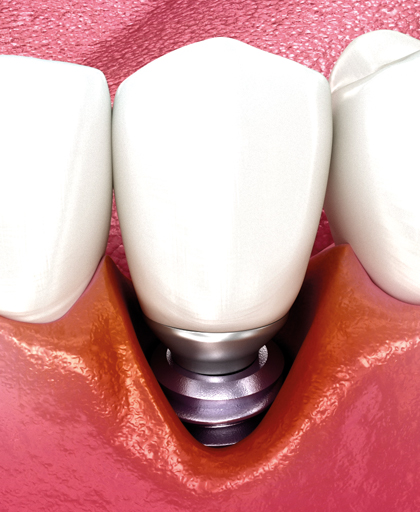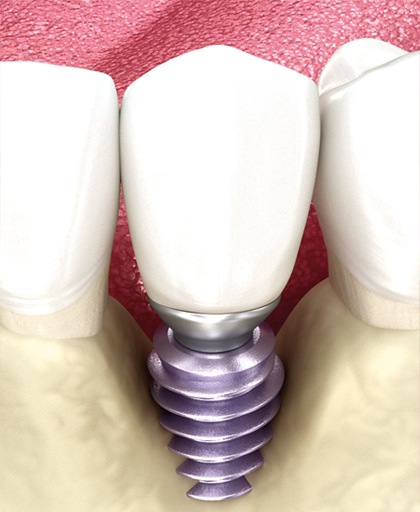Prevalence of peri-implant diseases
Peri-implant complications follow a well-established clinical pattern, with alarming incidence rates.
Mucositis
- First stage of peri-implant diseases
- Affects up to 50 % of implants
- Reversible, but a gateway to severe complications
Peri-implantitis
- Occurs in 40 % of mucositis cases, i.e. around 20 % of implants in total
- Associated with progressive and irreversible bone loss
Loss of osseointegration
- Mobility and implant failure
- Affects 50 % of peri-implantitis cases, i.e. around 10 % of implants in total
Mucositis
Mucositis is the implant equivalent of gingivitis around a tooth. The aetiology of this inflammatory condition is inadequate oral hygiene, combined with the nature of the biomaterials in contact with the gum. Just as periodontitis follows uncontrolled gingivitis, peri-implantitis occurs when mucositis is not intercepted.

Mucositis, which affects almost 50% of implants, is the first warning sign before an inflammatory reaction occurs in all peri-implant tissues.
Clinical features:
- Bleeding on probing
- Gum inflammation and swelling
- No radiographic bone loss
Prevalence rate:
- 50 % of implants after 5 years
Peri-implantitis

Peri-implantitis is the implant equivalent of periodontal disease on natural teeth: an aggressive inflammatory and infectious condition that causes progressive loss of the implant’s supporting tissues.
Clinical features:
- Probing depth ≥ 5 mm
- Bleeding and/or suppuration on probing
- Bone loss ≥ 2mm
Prevalence rate:
- 40 % of mucositis cases
Loss of osseointegration

Loss of osseointegration marks the ultimate stage of implant
complications: mobility and pain make implant removal inevitable, equivalent to the avulsion of a natural tooth affected by severe periodontitis.
Clinical features:
- Implant mobility
- Pain
- Late-stage of bone loss
Prevalence rate:
- 50 % des cas de péri-implantite




